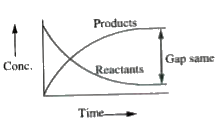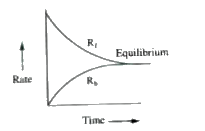A
B
C
D
Text Solution
Verified by Experts
The correct Answer is:
Topper's Solved these Questions
CHEMICAL EQUILIBRIUM
AAKASH SERIES|Exercise PRACTICE SHEET (EXERCISE -II) (LEVEL - II) LINKED COMPREHENSION TYPE QUESTIONS|3 VideosCHEMICAL EQUILIBRIUM
AAKASH SERIES|Exercise PRACTICE SHEET (EXERCISE -II) (LEVEL - II) INTEGER TYPE QUESTIONS|2 VideosCHEMICAL EQUILIBRIUM
AAKASH SERIES|Exercise PRACTICE SHEET (EXERCISE -II) (LEVEL - II) STRAIGHT OBJECTIVE TYPE QUESTIONS|20 VideosCARBOXYLIC ACIDS AND DERIVATIVES
AAKASH SERIES|Exercise CONVERSIONS|19 VideosCHEMICAL KINETCS
AAKASH SERIES|Exercise EXERCISE - 3.2|45 Videos
Similar Questions
Explore conceptually related problems
Knowledge Check
A
B
C
D
A
B
C
D
A
B
C
D
AAKASH SERIES-CHEMICAL EQUILIBRIUM-PRACTICE SHEET (EXERCISE -II) (LEVEL - II) MORE THAN ONE CORRECT ANSWER TYPE QUESTIONS
- Following two eqilibrium is simultaneously establised in a container ...
Text Solution
|
- For the gas phase reaction C(2) H(4) + H(2) hArr C(2) H(6) (Delta H = ...
Text Solution
|
- Decreasing in the pressure for the following equilibria: H(2) H((s)) h...
Text Solution
|
- Which are true for the reaction: A(2) hArr 2C+ D
Text Solution
|
- For given two equilibrium attained in a container which are correct if...
Text Solution
|
- Van't Hoff equation is
Text Solution
|
- Which is / are correct ?
Text Solution
|
- Which of the following will not affect the value of equilibrium consta...
Text Solution
|
- Heating a lI group metal cabonate leads to decomposition on "BaCO"(3(s...
Text Solution
|
- AgCl((s))is sparingly soluble salt, AgCl((s)) hArr Ag((aq))^(+) + Cl(...
Text Solution
|



